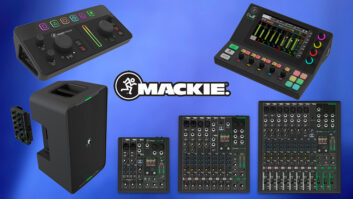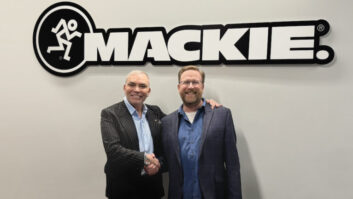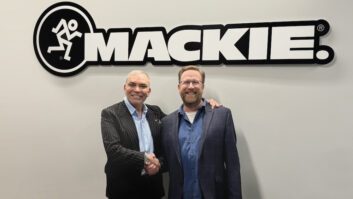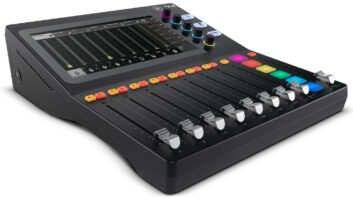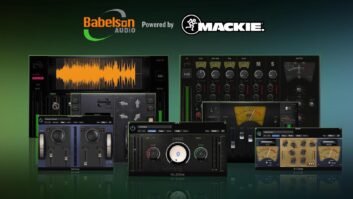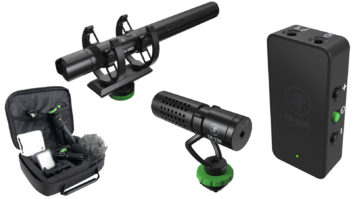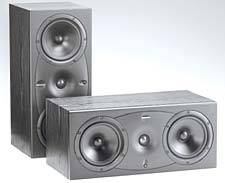
Let’s face it, monitor reviews are tough. Trying to describe withwords how something sounds is like the old tale about the four blindmen and the elephant: Each one has a completely different idea of whatit is, based on what part of the beast he’s touching. In discussingspeakers, no matter what music and methods you use to base yourjudgments on, your chances of finding common ground with a majority ofpeople are pretty close to nil.
But despite being the single-most subjective item in the studio,monitors are, beyond a doubt, the most indispensable. Whether we’repainstakingly tweaking the EQ on a high-resolution orchestral master orslicing and dicing 12-bit loops on a hip hop track, we make ourdecisions based on nothing more than how it sounds. And, finding a setof speakers that will tell the truth, time and time again, is somewhatakin to unearthing the Holy Grail.
The concept of powered monitors is unarguably a great one. An ampand speaker perfectly matched, with an absolute minimum of cablecapacitance between them, opens a world of possibilities for newsonic-performance benchmarks. The convenience factor’s not bad either,with less cable and easier setup and calibration, particularly increating a surround system.
The HR626 monitors (MSRP: $899/each) are the latest in Mackie’s lineof powered near-fields, aimed at filling a niche between the largerHR824 and the more diminutive HR624. The HR626 employs two 6-inchwoofers, the design concept being to maintain the more midrange soniccharacteristic of the smaller, lower-mass cone while achieving greaterlow-end extension than a single six. The HR626 sports the same passiveradiator technology as the HR824, which also helps the bottom end. A1-inch domed tweeter sits between the woofers. A 100-watt amp powersthe bottom end, with a 40W amp for the tweeter.
TAKING THEM FOR A SPIN
I worked with a pair of the HR626s in my project room, a large(30×18) and relatively live space. I set the speakers on decoupledpedestals about three feet in front of a treated flat wall. Mackieincorporates a three-position switch to adjust low-frequency responsebased on whether the monitors are placed in a corner, against a flatwall or away from vertical surfaces. Input connections were courtesy ofa pair of matched Mogami cables with ¼-inch Switchcraft connectorson either end, connected to the outputs of a Tascam FW-1884 audiointerface. The bulk of my source material was final mixes played backvia S/PDIF from a Denon CD player, as well as their original multitracksessions in Steinberg’s Nuendo.
I chose an intentionally eclectic variety of source material,including neo-’90s grunge, acoustic-flavored jazz, punky post-’80s ska,and theater music featuring both a string quartet and synthetictextural atmospheres. For reference’s sake, I would occasionally A/Bthe Mackies with the familiar monitors I’ve mixed on for nearly adecade: an exceptionally accurate speaker built by Bob Norberg, themastering guru at Capitol Studios in Hollywood.
Generally speaking, the differences to the Norbergs were subtle. TheMackies offered little by way of surprises, and that’s a good thing.Low-frequency content was tight, without being boomy (though I cancertainly see where a sub would be useful in some bass-heavy contexts).Higher frequencies were clear without being overly shrill, and imagingwas spot-on, with subtle nuances in the mix turning up right where Iremembered them.
Mackie’s documentation suggests that you can mount the HR626s eithervertically or horizontally. In practice, I found the center sweet spotto be a bit too narrow when using them in the vertical position; if youtend to swivel in your chair now and then (okay, I admit to it), somecenter-panned aspects tend to move with you a bit too much. I noticedlittle of this with the speakers in a horizontal orientation, where thesweet spot was more generous.
The HR626s really shine in the mid-range, where many monitors,particularly powered ones, tend to falter and miss the mark. Somesystems under-compensate, producing a tone with warmth but lacking insubtle definition. Others are too aggressive, with a brightness that,after a few hours, is like fingernails on a chalkboard. But even afterworking with the Mackies for over eight hours, I felt very little inthe way of that all-too-familiar fuzzy and fatigued feeling.
As for how loud they’ll go, I don’t do a lot of earbleed mixing, butI pumped them up to 11 for a few minutes at a time. The 626s have acompressor-based safety net to keep the components from being damagedat high SPLs, but I never really heard it kick in at a high level. I’msure that there’s a point where it becomes operational, but it seems tobe pretty close to the pain threshold.
SUMMING IT UP
No amount of verbiage will substitute for your own ears. For mypart, I’d be quite comfortable having the HR626s as my primarymonitors. They translate well across the full spectrum, have a nicetight image and don’t get in your face. Personally, I couldn’t ask formore.
Mackie, 800/258-6883, www.mackie.com.
Daniel Keller is a Southern California-based writer, musician andaudio geek. He is currently installing a surround system to bettermonitor the voices in his head.

